Expressing advanced and specialized constraints and models
FLEXSCHE GP Advanced Options
When introducing a production scheduler, it is often the case that operational constraints and rules that were not initially recognized become important later on. FLEXSCHE GP Advanced Options is a set of extension features designed to flexibly respond to such situations.
A. Simul-loading Adaptive Split Option
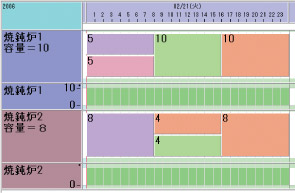
In simul-loading processes such as batch annealing and heat treatment, operations are dynamically split and filled according to the available capacity of resources. It can also be distributed across multiple resources. It functions with both resource-driven dispatching and operation-driven dispatching.
(2 Units)
B. Resource Occupation Option
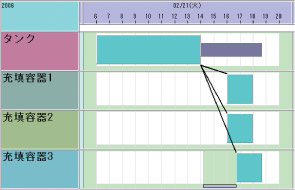
This option occupies resources even between operations to prevent other operations from intervening. It is useful in cases such as a reaction process where the equipment continues to be occupied until discharge after the reaction is complete.
(2 Units)
C. Inter-Process Continuous Constraint Option
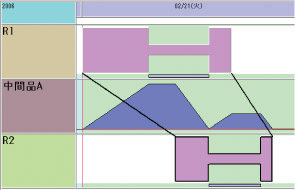
This option expresses the time relationship between processes where products are continuously transferred and used in subsequent processes even during manufacturing in the previous process. It also supports N-to-M relationships between processes in order pegging, etc. It allows the incorporation of on-site innovations for lead time reduction into the plan.
(1 Unit)
D. Order Pegging Automation Option
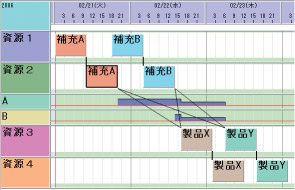
This option automatically pegs replenishment orders for materials and intermediates to the orders that require them, preventing them from being consumed by other orders.
(1 Unit)
E. Maintenance Operation Assignment Option
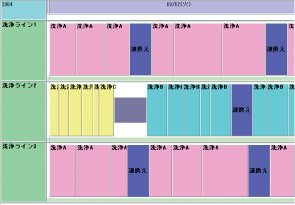
During the assignment process, operations are dynamically generated and assigned to a specified date and time based on conditions. It can be used in cases such as performing maintenance after a machine has been operating continuously for 300 hours.
(2 Units)
F. Filling by Resource Capacity Option
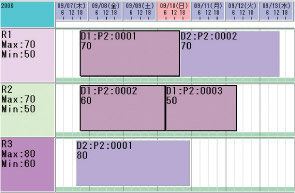
This option automatically splits and assigns operations to fit within the upper and lower capacity limits set for each resource, or generates replenishment orders according to the resource capacity of the final process.
(1 Unit)
G. Variable Safety Stock Level Option
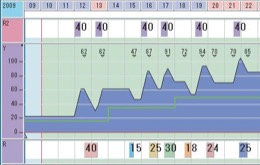
By allowing the safety stock level to fluctuate over time, it enables replenishment production with varying inventory levels.
(2 Units)
H. Order Splitting Automation Option
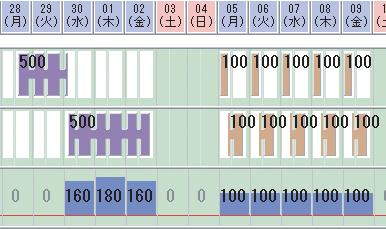
This option splits orders into a specified number using the Split orders method and evenly distributes the due date or start date within a specified period. It is convenient for cases such as splitting a given monthly production volume into weekly production in make-to-stock production.
(1 Unit)
I. Split-Compatible Inter-Process Minimum Time Constraint Option
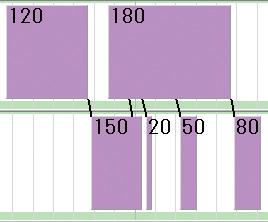
When the preceding and subsequent processes are split and their ratios do not match, a connection line is drawn at the corresponding points of the split ratios in the middle of the operations, and a minimum time constraint is imposed at those points.
(1 Unit)
J. Initial Inventory Control Option
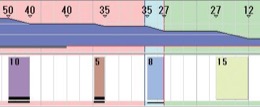
By recording the theoretical inventory level at a certain point in the past as the initial inventory using the Update initial inventory method, it allows scheduling that considers inventory levels without heavily relying on actual inventory information.
(1 Unit)
K. Item Consumption Expiry Option
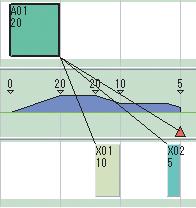
This option allows setting the maximum period from manufacturing an item to its consumption. In replenishment order generation and automatic order pegging, inventory that has exceeded the expiration is treated as discarded.
(2 Units)
L. Squad Resource Option
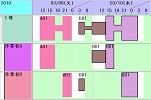
A squad resource behaves as if multiple resources have come together to form a single resource. For example, when assigning operations to a squad resource consisting of day shift and night shift workers, it allows automatic worker rotation during the operation.
(2 Units)
M. Item Subdivision Option
This option allows modeling the location where an item exists. By defining storage locations, it enables visualization of inventory levels by location and planning that considers different locations for the same item. It is useful for scheduling across multiple manufacturing sites.
(2 Units)
N. Calendar Creation Automation Option
This option allows automatic adjustment of resource operating hours using the Modify Resource Calenders Method. It can be used to automatically set the minimum necessary overtime to meet due dates or to simulate scenarios where power consumption is limited.
(2 Units)
O. Alternative Job Option
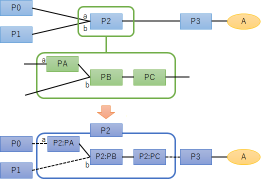
This option deploys and assigns a series of operations in place of a single operation. It simplifies operations where process definitions are divided by hierarchy. It also allows automatic selection of one from multiple alternative production methods.→Feature Introduction
(2 Units)
P. Storage Tank
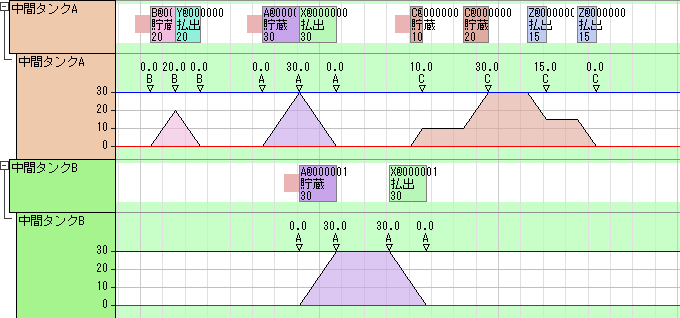
By using the "Storage Tank" resource, it becomes possible to store items in resources through operations or release them from resources.→Feature Introduction
(2 Units)
Q. Split by Remaining Inventory
When assigning operations, it is possible to automatically split according to the remaining quantity of items used by the operation or the available capacity of items produced by the operation. It also supports the remaining quantity and available capacity within storage tanks.
(1 Unit)
R. Cluster Operation
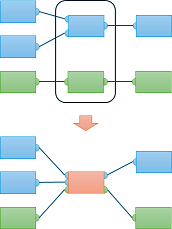
This option allows generating "Cluster Operations" that can bundle multiple operations and assign them as a substitute.
(2 Units)
The total number of units of options used in FLEXSCHE GP Advanced Options is limited by the maximum number of units licensed.
You can freely reselect within the range of restrictions.
FLEXSCHE GP Advanced Options are added as needed.
For the latest version, please contact us separately.
